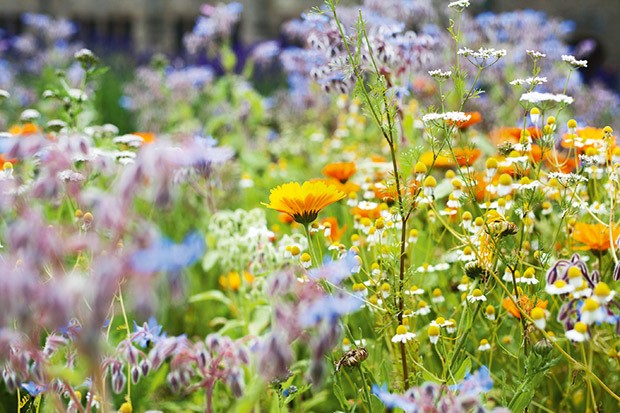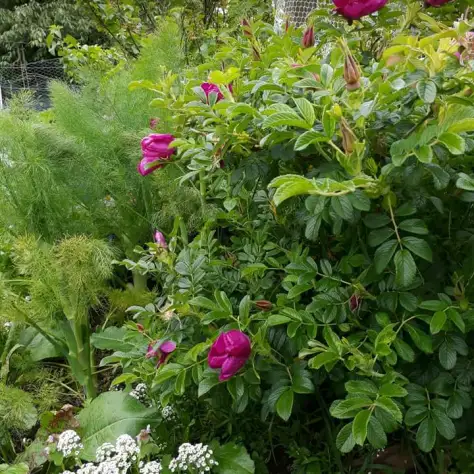HEDGEROWS IN THE LANDSCAPE
Hedgerows Provide a safety corridor for birds and insects where food and habitat become more available than in open pasture. Hedgerows are grown to a minimum ht of 1 m and at least 1.5m wide, comprising a mixture of plants, from low-growing herbs to trees are planted along fence lines. Plant choices are functional as well as providing a wide biodiversity. Reasons for plant choices are privacy, shelter, fodder/forage, food, firewood, bird and insect attraction and appearance. The list of trees and shrubs below can be included in a NZ hedgerow.
TREES:
5 & 7 Finger tree. NZ native Fast growing, fodder, 2 m centres, good shelter.
Cabbage Tree: fodder, useful leaves can be woven or plaited, leaf tips as fodder.
Horopito: NZ native shelter and fodder. Medicinal properties Plant at 2m centres.
Kanuka: NZ native Rapid growing shelter tree with fine foliage, browse-resistant shelter. 1 m Centres.
Kawakawa, NZ native, pepper tree: has medicinal properties as a poultice and tea. 2 m centres
Karo NZ native, shelter hedging tree, fast-growing, 1m centres
Kotukutuku/Tree Fuchsia.NZ native Flowers are attractive, dense shelter plants, 2m centres.
Mahoe: NZ native shelter/shade and fodder. 2 m centres. :
Lucerne (tagasaste) is the most well-known species used in hedgerows. It’s a fast-growing tree. Lucerne is good quality stock food, flowers prolifically, provides good feed for bees, fixes nitrogen in the soil, and makes good firewood
Totara NZ native, naturally spikey leaves forms an animal proof, native hedge, fruit attracts birds. At 3-4 m centres
Pohutukawa NZ native, flowering tree that attracts bees and birds and provides shelter and shade plant at 3-4m centres.
SHRUBS
Coprosma, dense shrub, shelter, fodder,& berries. Plant @ 1m centres.
Corokia, flowers for bees, tolerant to drought, shelter plant @1m centres
Griselinia, rapid growth, good cover, susceptible to phytophthora, plant @ 1m centres
Kumarahou, in sunny spots good healing plant, good for bees, plant at 1m centres.
Rengarenga groundcover, bee fodder
Flax- and Toetoe @ 1m centres as ground cover and bee, bird food. Eaten by cattle
NZ spinach is excellent chook food and groundcover.
Berris& Herbs currants, blueberries, grape, rhubarb, climbing beans, herbs including fennel, rosemary, lavender, thyme, tansy, alexanders, parsley, chives, comfrey etc.
Elder for their flowers and berries, and Roses for their flowers and rosehips are old-fashioned inclusions in Hedgerows.
Berry species originate from forest environments where they grow on the edges or in clearings. They prefer cool root areas.
If you’re going to coppice bigger trees for fodder, forage, or firewood, return their leaf litter and smaller branches to the hedgerow as chop-and-drop mulch.
Exceptions are apricots, avocados, Kowhai & Tutu, all toxic to stock.

The plants at ground height can include annuals and Herbs such as calendula, borage, mustards, lupins, peas, phacelia, violas, or any herb or flower that won’t compete with young shrubs. Woody herbs such as rosemary, lavender, and thyme provide food, medicine, and flowers for bees. The deep roots of fennel, comfrey, yarrow, dandelion, and plantain bring up nutrients, then distribute them back to the soil as they die down. Short-lived herbs such as calendula, borage, chamomile, parsley, and chives provide nutrients to the soil and food and habitat to beneficial insects. The legume family – peas, beans, vetches, clovers, lupins – provide nitrogen for plants.
tip: use mulch for weed control
Use wet cardboard/thick newspaper/old carpet over soil, covered with a 10cm deep mix of:
■ aged woodchips and bark;
■ leaf litter;
■ grass clippings;
■ straw;
■ manure not fresh but dried/aged
Add more mulch each year until the hedgerow is fully established.
Another option is a green mulch’ or ‘Herbal Lay’.
Animals & hedgerows
You’ll need fencing to protect a hedgerow, either temporary or permanent until the plants are large enough to sustain grazing.

